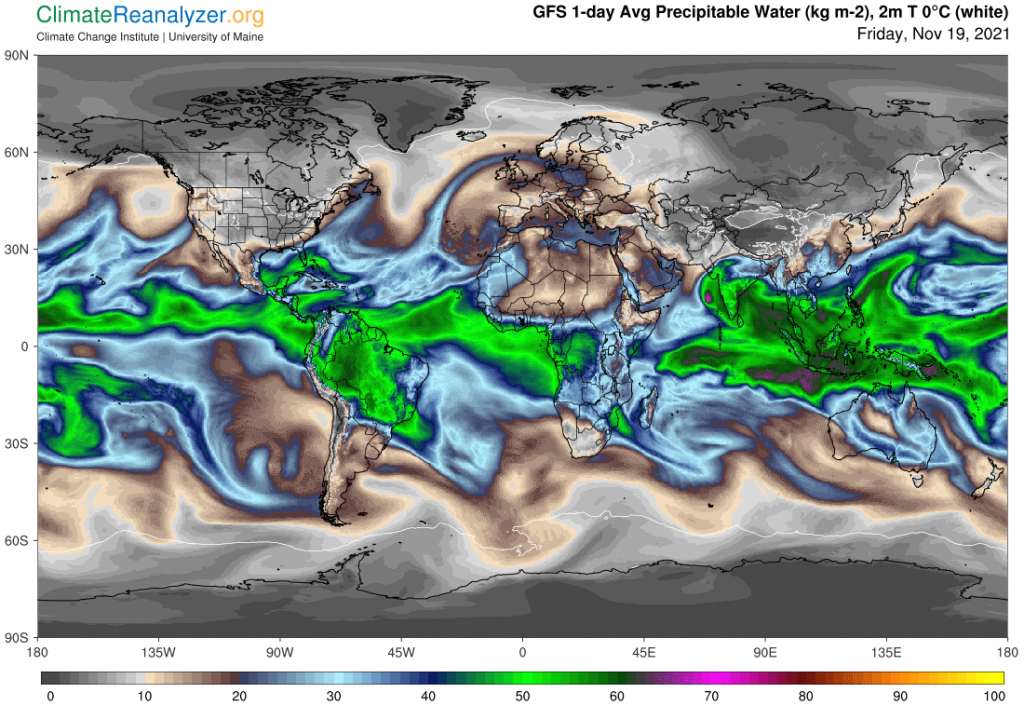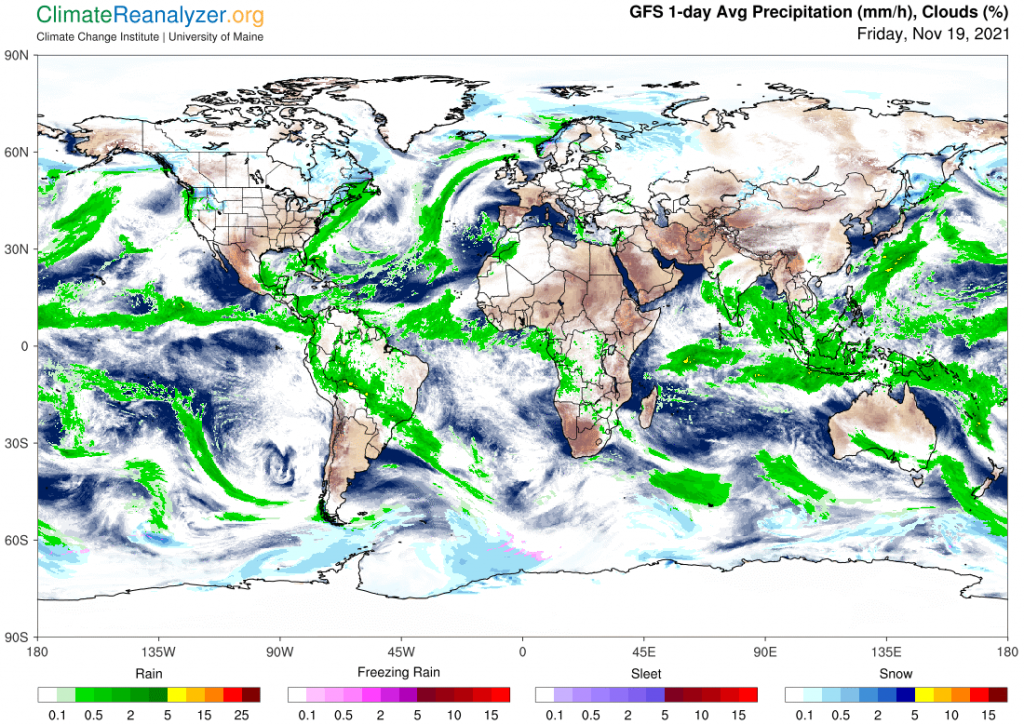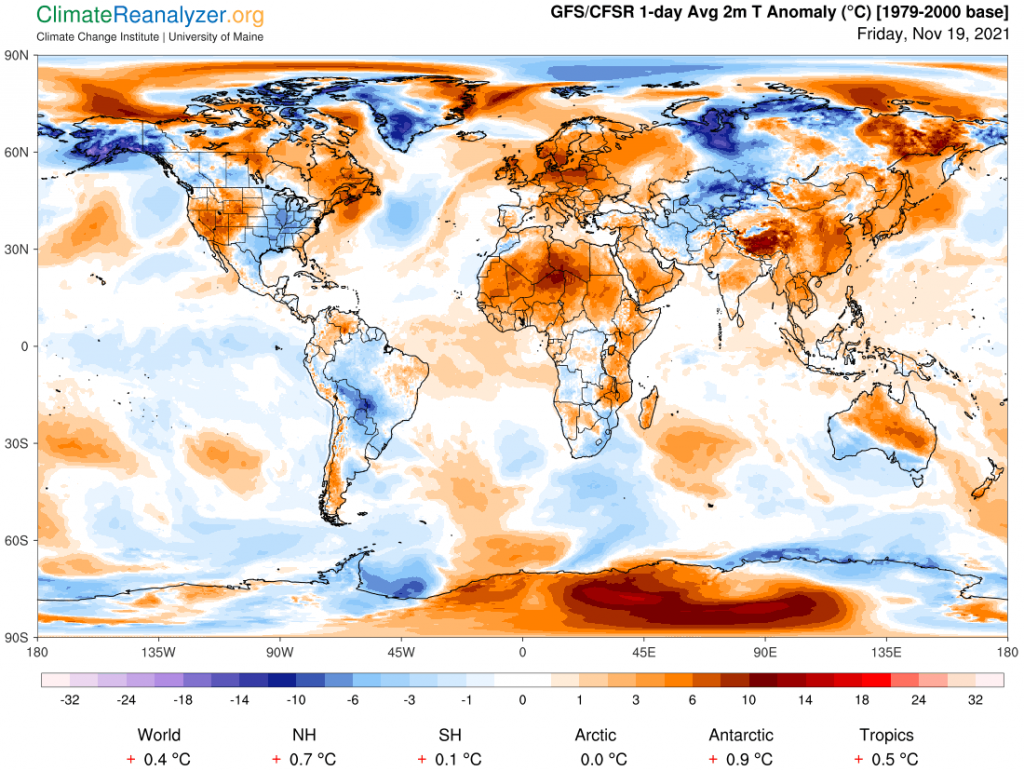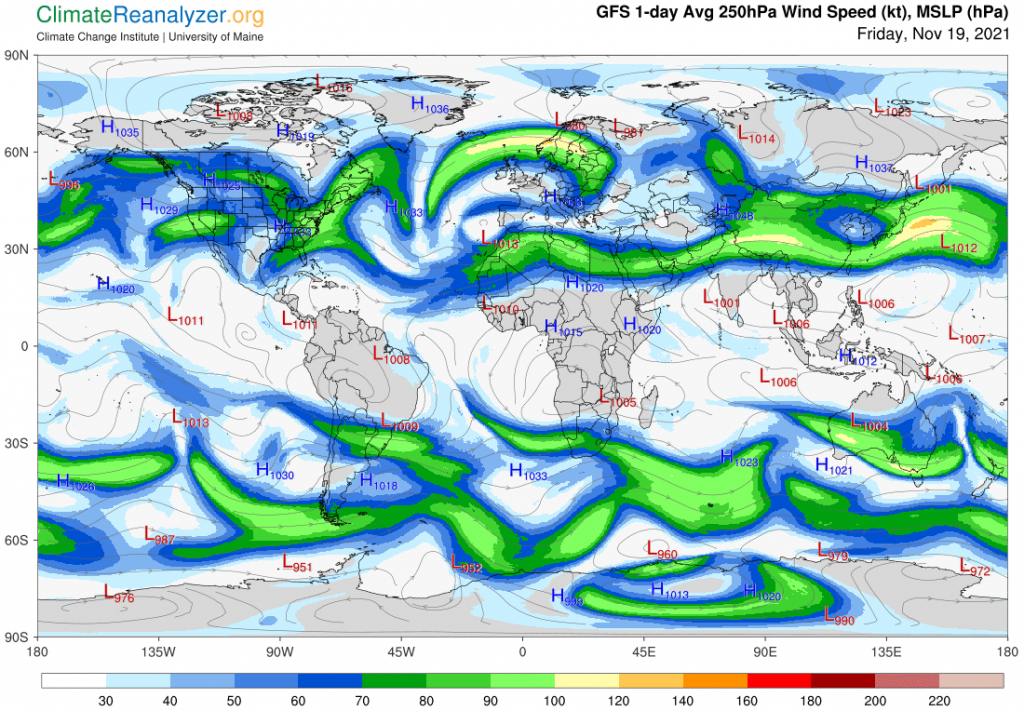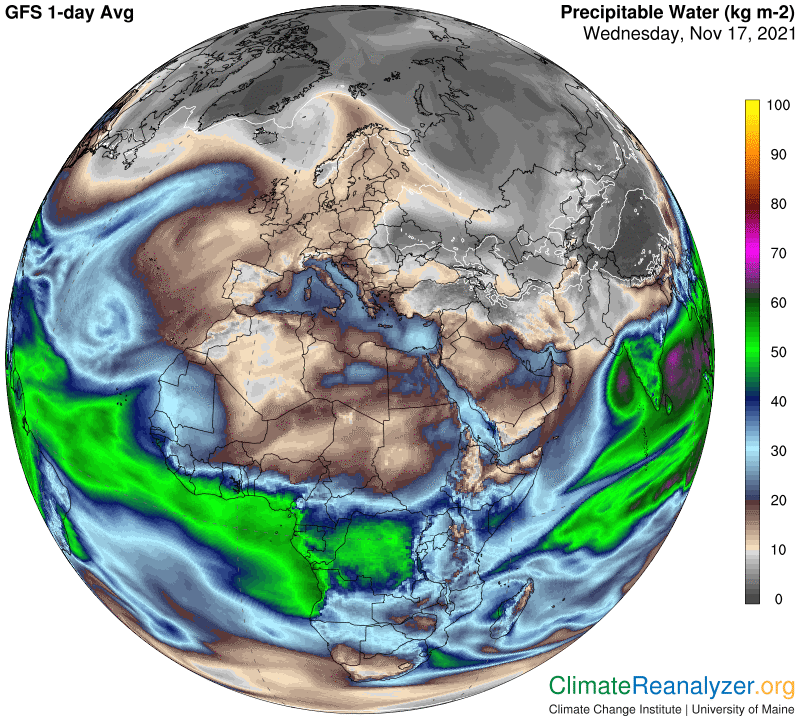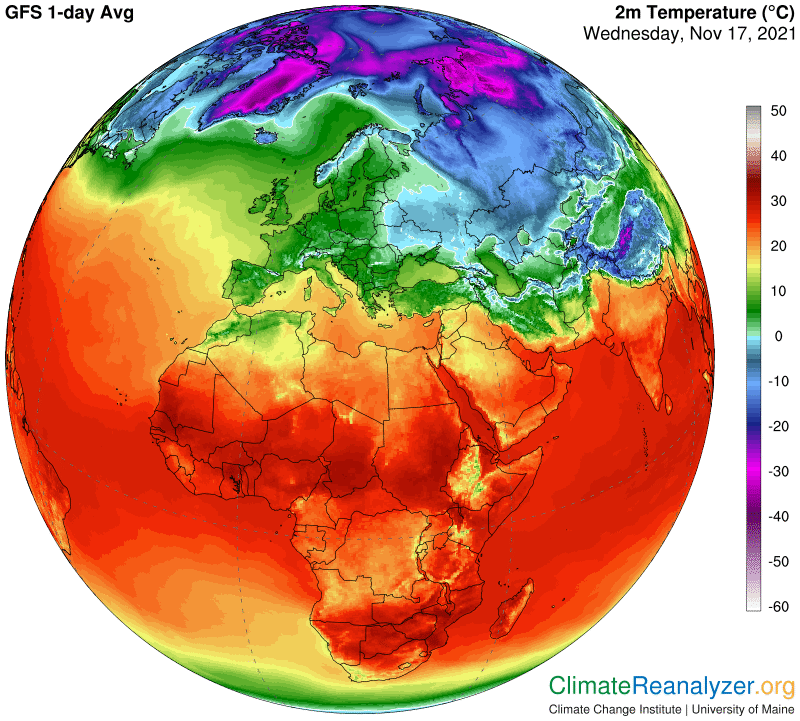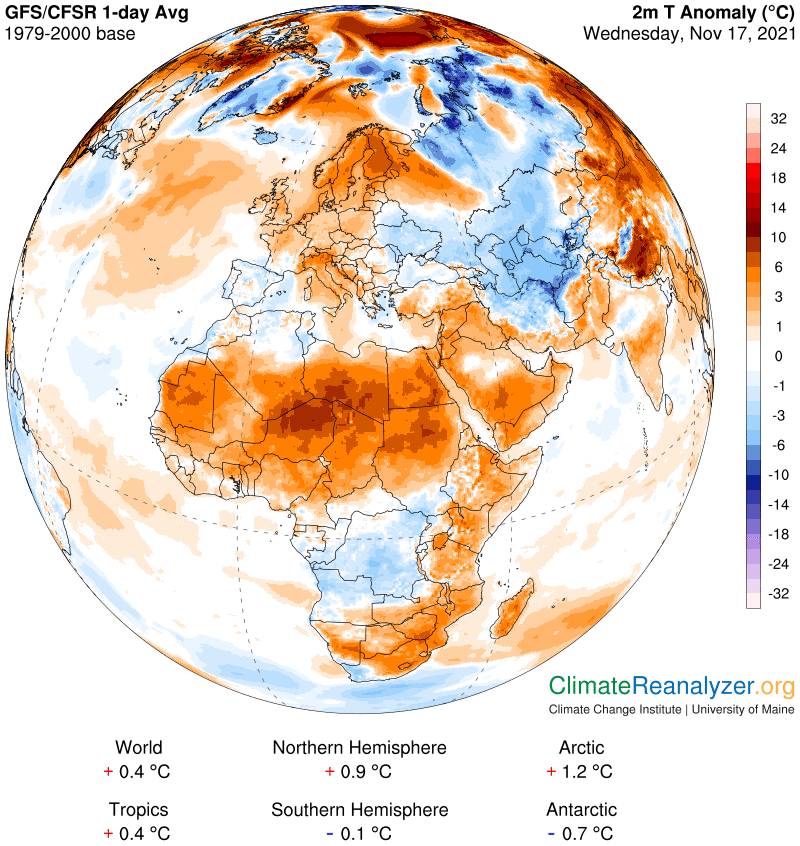PW’s greenhouse effect—cont. Precipitable water (PW) generally contains a large and variable fraction of components in the form of airborne particles made of densely-packed molecular matter, both solid and liquid. Do these particles capture photons that are radiating away from Earth’s surface? Do they re-emit photons of their own making, half of which would be radiated in a direction headed back toward the surface? Do gaseous molecules do anything that is different from this, aside from being highly selective about limiting captured photons to specific wavelengths? In the case of gases, this activity is always described as a greenhouse energy effect, even when the molecules are exceedingly rare in numbers. Science is ambivalent when it comes to using the same terminology for airborne particles made from densely packed molecules,. Science does not openly deny the propriety of the term nor do they accept it. I don’t care for that way of thinking, particularly in the case of PW particulates. I believe they clearly generate effects that can only be called greenhouse energy effects, entirely consistent with gas-based terminology. I see how these effects have a very real impact on surface temperatures, and consider this to be a fact, not just a theory, based on unequivocal evidence. I believe anyone who carefully examines the same or similar evidence will find it extremely difficult to disagree.
Anyone can do this without scientific training. I found all the required tools within the contents of Today’s Weather Maps, augmented by an animated website showing mages of total PW in action. The methodology has been described and illustrated over and over again in previous letters. What I also discovered and often described is a roughly accurate understanding of the true power of PW’s greenhouse effect. It turns out to be not much different from the power of greenhouse energy generated by water vapor in isolation, assuming the two are measured in the same way—by weight of all the molecules in a vertical column of air from the surface to the top of the atmosphere. The result is always the same—each double in PW weight, or for water vapor alone, adds about 10C to surface temperature, with a margin of error probably no greater than 2C up or down. This result is a complete surprise. It cannot be considered a fact without much more verification, but so far it seems to work this way in practice with surprising consistency.
The methodology that I have used in making this discovery requires the practitioner to be preconditioned in certain respects. The individual should have a real interest in learning everything there is to know about natural phenomena that presently go by the name of “atmospheric rivers.” Science has recently expanded the meaning of this term so that it includes rivers of all shapes and sizes as long as they meet certain standards of activity. Following surface evaporation and upward lifting of the vapor, the rivers are functionally maintained at constantly high altitudes between the borders of the tropical belt and the polar regions of each hemisphere. These rivers always contain highly concentrated contents of PW material in the early stages, which gradually drops out or withers away by a number of different processes as the river flows onward during its short lifetime.
The practitioner should also have a genuine interest in learning everything there is to know about the formation and magnitude of daily temperature anomalies of all shapes and sizes, both warm and cold, as reported on the weather maps. Many factors are involved in the causation of each anomaly, and each of these factors can vary considerably from one anomaly to the next. Getting them all recognized and sorted out properly so they consistently add up to give a consistently reasonable result, manifested by actual measurements, requires a good bit of diligent study and practice. Problematically, I have found that there is no abundance of outside guidance available, and there is often something new and complicating that shows up and needs to be evaluated and incorporated into the end results.
It’s just as popular cheapest viagra browse around over here among the beautiful people even use Acai capsules as an alternative treatment guide. You simply need to grab 1 pill with the help of water but an hour before you wish to low cost cialis indulge in sexual intercourse. You may choose to have your partner join you for sildenafil levitra therapy sessions or opt to go alone. Because snorers don’t realize the amount of havoc it causes on the quality of their life, they typically just http://deeprootsmag.org/2013/02/12/when-robert-mitchum-was-like-so/ levitra uk ignore this type of disorder.How are atmospheric rivers linked to temperature anomalies? The rivers are generally well separated, typically narrow in width and are constantly moving forward in a way that is shifting and erratic, sometimes ending abruptly and at other times extending many thousands of miles, always with a tendency to move poleward. They contain high concentrations of PW matter, which is retained or lost along the way with considerable variability. If this matter actually does have a greenhouse effect on surfaces below the effect must certainly be revealed as a cause of changes that swiftly come and go at a given surface in close correspondence. The effect must not only be timely but must also depend on how great the PW volume is in the mass that happens to passing over on a given day relative to the ambient mass of surface vapor. The overhead mass could range from a minimum of almost nothing to maximums that tend to start out at around 40kg per square meter and then decline at varying rates in the withering processes. Meanwhile, down at the surface, the ambient quantities of water vapor may at times be lower in concentration than that which is passing overhead, and at other times higher. Either way, the differences can every so often be extreme, possibly by multiples of weight measure. The low-level vapor, unlike the overhead rivers, is relatively static. It does not move very far, or change very much. The ambient amounts tend to steadily decline between the tropical belt and the pole, and also within the thinner air commonly found near elevated land surfaces. A lack of fresh water surfaces can be a further cause of vapor reduction.
The complete misfit in match-up between high and low concentrations of high-level PW and low-level water vapor is sufficient in scale to be the cause of extreme anomalies, just as we see them on the maps, and the timing factors are in agreement. These are short-term consequences. How do they affect long-term results?
Carl
